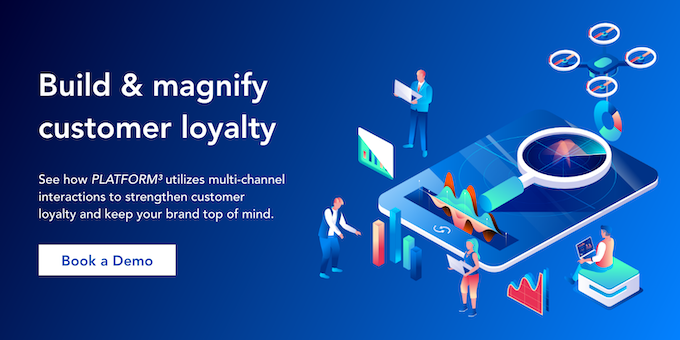Loyalty Strategies: The Good, The Bad, and The "LOL What?!"
Loyalty programs have taken off; from Starbucks to Sephora, many brands and retailers offer their customers reward points for purchases, social media shares, friend referrals, email sign-ups, and other actions that boost brand engagement.
There are many factors to consider before creating a loyalty program, such as the type of rewards to offer, the type of actions that customers have to take to earn reward points or the minimum amount of points needed to redeem a reward.
We researched everything we could about loyalty programs (and even tested out a few!), rounded up three major approaches to loyalty programs we uncovered and categorized them into the good, the bad, and the “lol what?!” to help you craft your next loyalty program. You’re welcome.
The Good
Your point system is easy to understand. Simplicity is key when designing a loyalty program. When customers see your program being advertised or hear about it from a friend, your value proposition needs to stand out. They need to know what you’re offering them and how they can achieve it without having to solve an equation.
With many loyalty programs, the more purchases people make, the more reward points they are likely to earn. These reward points translate into rewards such as coupons, discounts, freebies, gift cards, etc. This is effective because it’s easy for customers to understand what they need to do for a reward: make frequent purchases, earn points, redeem points for a reward.
The more variables you add, the more complex your point system becomes. For example, if your customers need to spend X amount on the 2nd day of the month at noon to get X points that can be redeemed three days into the first week of a month with an odd number, your program has ceased to be a loyalty program and has turned into an SAT practice problem.
Keep it simple. If customers don’t understand the requirements or benefits of your loyalty program, you will lose them.
The Bad
The rewards take too long to attain. In any loyalty program, the rewards are the incentive because they are what the customer is working towards. In most cases, customers will toss an extra item or two into their carts just to reach a certain amount of points to get a reward they’ve been eyeing. As such, it makes sense for brands and retailers to make certain rewards worth more points. But when all your rewards are worth an unbelievable amount of points, you’re doing something wrong.
For example, it should not take customers a year to earn enough points to redeem a 5 dollar gift card. With loyalty programs, you want to keep people engaged and encourage them to participate, and if it takes a frequent customer months to earn enough points for something as little as a coupon for a dollar, you’re wasting your customers’ time.
The "LOL What?!"
The reward points expire too soon. We understand that the goal here is to motivate customers to make purchases more frequently, earn enough points, and redeem a reward before the expiry date rolls around, so you can achieve purchase frequency. Or to ensure that your customers actually redeem their points because unredeemed points affect the redemption rate of your loyalty program.
Purchase frequency and increased redemption rates are important for your business and so we get it. We get that some brands and retailers feel that they need to add expiry dates to reward points. The problem, however, is that with points that expire too soon, you’re asking your customers to obsessively keep track of their points, and hastily redeem them. This adds an element of stress to your customer’s life which is not what your loyalty program should be doing.
For example, if the reward points you award your customers expire within a week, or even a month, your loyalty program isn’t benefitting your customers. Customer retention is a desirable result of any loyalty program, and placing such time constraints on using up reward points that customers have earned for already purchasing your products is likely to cause you to lose customers instead.
Build data-driven loyalty programs to boost consumer engagement
To navigate the complexities of creating and running a loyalty program, brands need user first-party data to understand their consumers’ purchase habits and behaviors. Consumers insights help keep marketers up-to-date on their program engagement, purchase frequency, reward redemption rates, and more.
With 3 tier logic’s PLATFORM³, brands can execute data-driven loyalty programs to drive brand awareness, user retention, and consumer engagement. Modules like Contests and Promotions, Points and Gamification, Social Content Sharing, and Data Capture & Analytics provide marketers with the tools and information they need to run a successful loyalty program. To learn more, book a demo with our team today.

